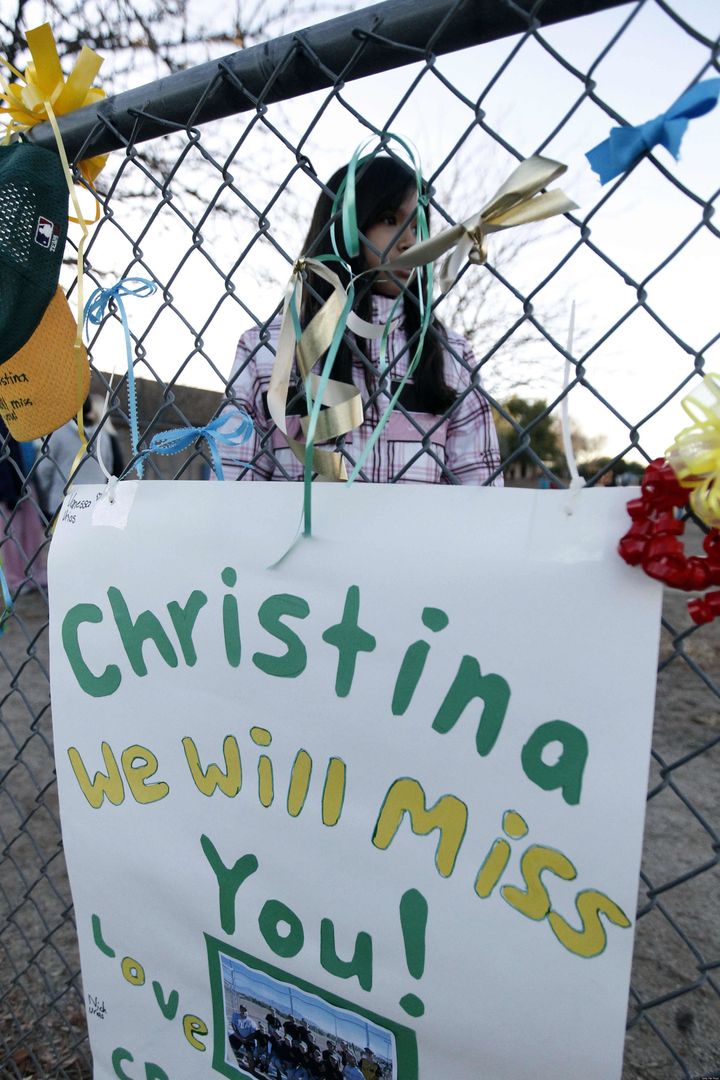
Less than three weeks have elapsed since Rep. Gabrielle Giffords received a gunshot wound to her head, and already she has made miraculous progress in her recovery. While many Americans were elated by the news of Rep. Giffords' release from her intensive care unit, many still continue to search not only for meaning but solace in the wake of the tragedy. The comforts are cold and few when six innocent people including a nine-year-old girl are killed, several others including a congresswoman are seriously wounded, and thousands in Arizona and millions across the country look on in horror.
And yet there are heartening, if small developments in American politics brought to light by the attempted assassination of Rep. Giffords and the random murder of third grader Christina-Taylor Green.
The congresswoman and the young girl had quite a bit in common. Though they never met, and will never have a chance to become acquainted, they were both committed to the notion and practice of public service. Their shared identity speaks to the increasing -- if slower than ideal -- opportunities for women in contemporary American politics.
In 2006, Rep. Giffords, then 36, became the youngest woman ever elected to Congress. This distinction immediately crystallized for any American heretofore unfamiliar with Rep. Giffords the image of the superlative overachiever that her friends, family, congressional colleagues from both parties, and political observers long ago recognized.
The precocious Ms. Green had already left similar impressions. A member of the student council at Mesa Verde Elementary School and the only girl on her little league team, Ms. Green's interest in governing and politics brought her out to the Tucson shopping center last Saturday for Rep. Giffords' "Congress on Your Corner" event. Emerging as a role model by age 36 is admirable; doing so at one-fourth that age is astonishing.
Sadly, Rep. Giffords will also hold forever the distinction as the first American female politician targeted for assassination. This is not the sort of gender equality organizations like the Women's Campaign Forum seek, and we hope violence does not become the curse that mars the blessing of rising numbers of elected women. The nasty campaign language and imagery used to discredit female politicians already deters many women from seeking office; a fear for personal safety would significantly compound the problem.
The good news is that far more women run for and win office today than generations past. On the day almost a half century ago when President John Kennedy was assassinated, there were but two females in the U.S. Senate and just eighteen in the House. For the 112th Congress sworn in four days before the Tucson shooting, the respective totals are 18 and 72.
Every new election cycle brings new "firsts" -- the first female governor of this state, the first female US senator from that state. But many firsts remain elusive, and parity in all but a few state legislatures remains a still-distant dream.
Indeed, at 51 percent of the population but just barely 17 percent of seats in the current Congress, women remain under-represented. Women's representation in Congress decreased for the first time in over three decades as a result of the 2010 midterms. 86 national legislatures, including Cuba and Afghanistan, rank ahead of the United States on this measure. This share of women presently serving in Congress is not much better than the one-in-nine ratio Ms. Green experienced every time she took her position at second base surrounded by eight boys in the field.
There is no single path to reaching gender parity in Congress and the American state legislatures. But civic education for young men and women can raise awareness about how government decisions affect their daily lives and how our actions and inputs can affect those decisions. Organizations like ours help women overcome their apprehensions about running for office, and provide them with the guidance and support they need when they become candidates.
But Rep. Giffords' career and Ms. Green's life cut tragically short provide something more potent than gender parity statistics and more effective than any candidate recruitment program: powerful examples of public leadership by women for women (and men) to admire. Their shared interest in public service will forever connect Rep. Giffords' political career with truncated life of an impressive young girl who may have grown up to be Arizona's first female US Senator -- and to whom, as President Obama stated so eloquently, we owe a democracy as good as young mind imagined.
Although violent tragedy brought these two young women to national attention, their lives testify to the strides women have made in politics during the past half-century -- and the progress and possibilities ahead. May Gabrielle Giffords recover fully to continue to make a difference, and may Christina-Taylor Green rest knowing she already did.